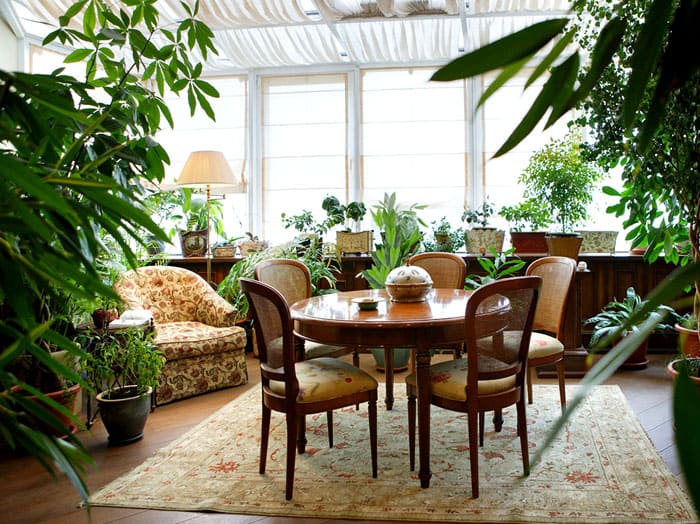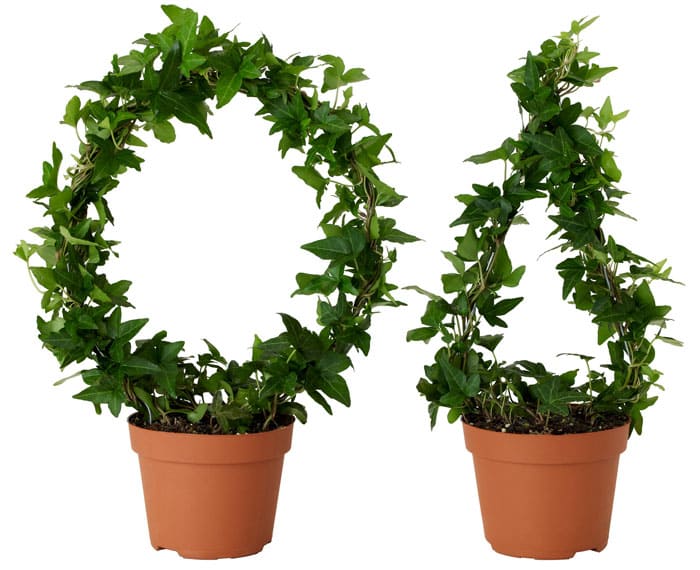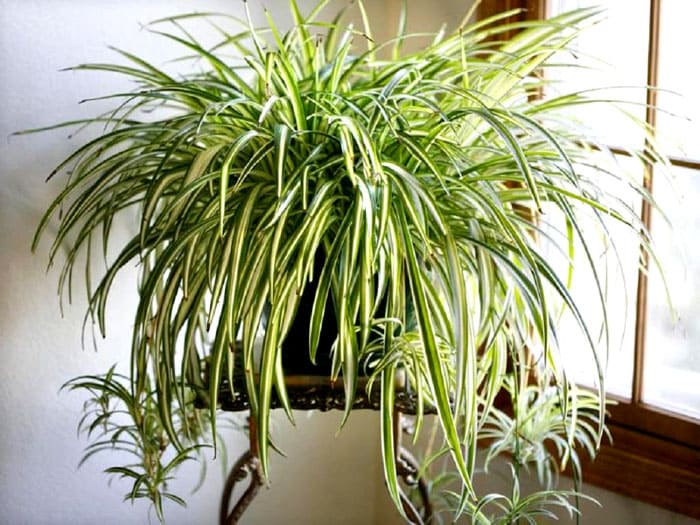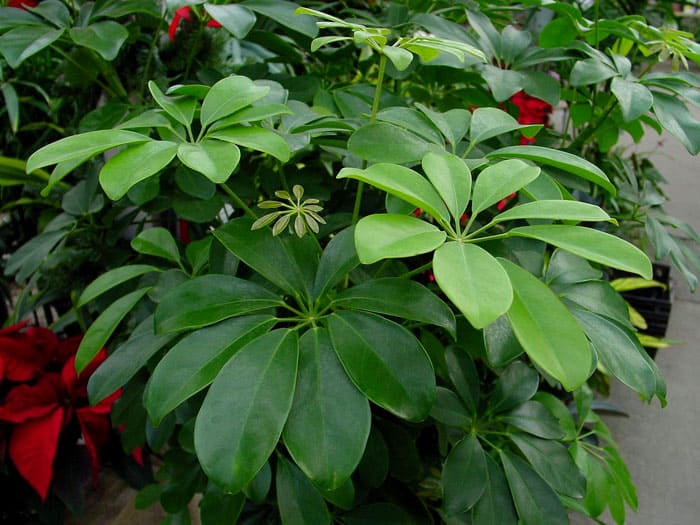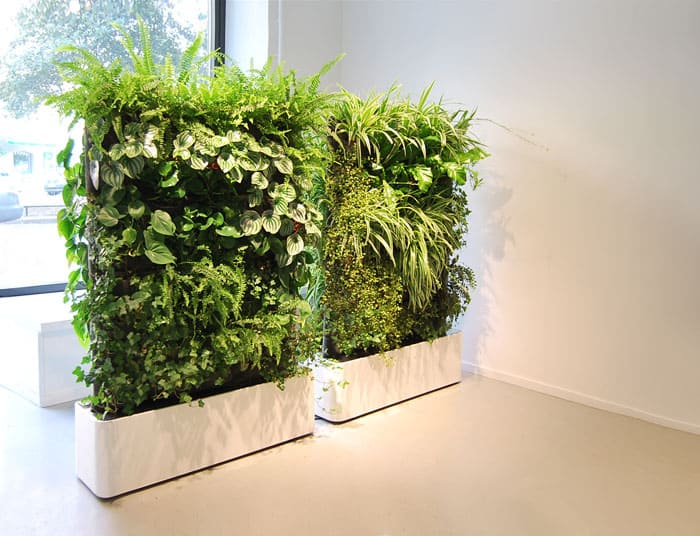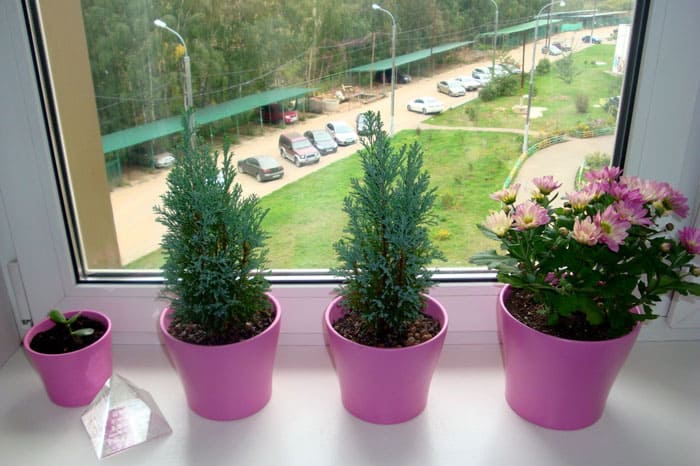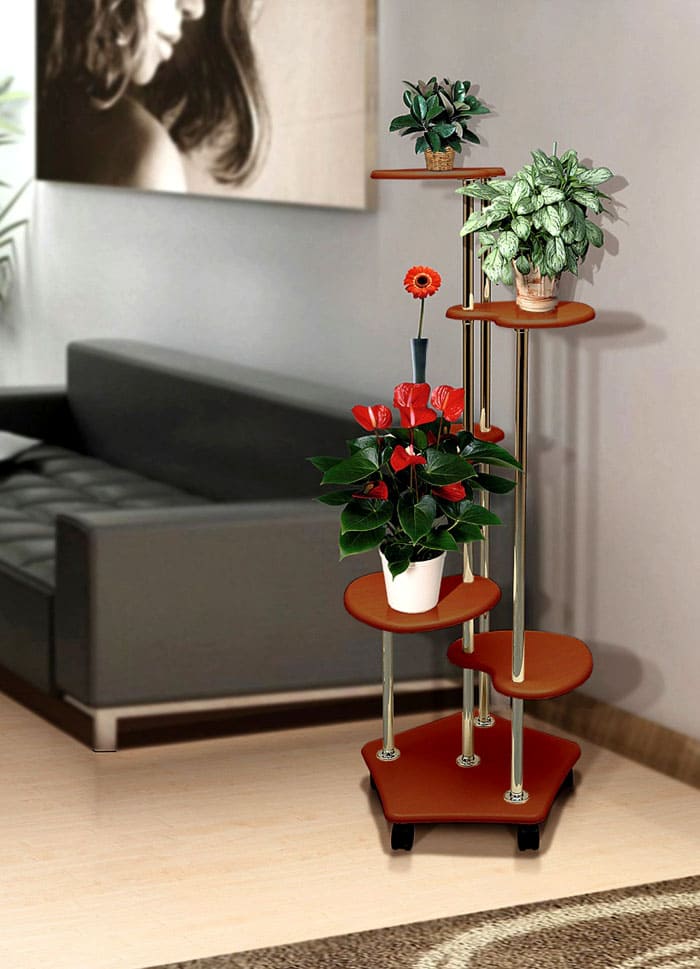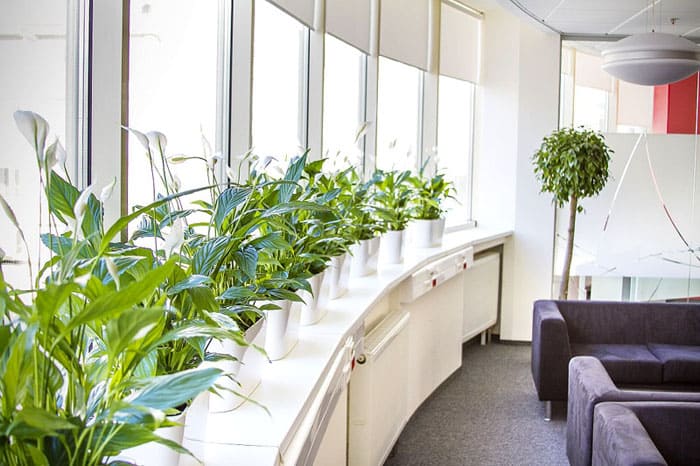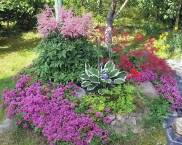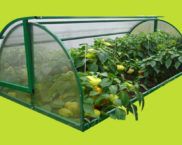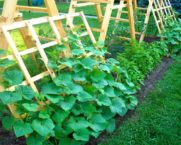What plants will look most advantageous in the interior of a residential building
A green world in an apartment is needed not only for decor, but also for the soul: plants in the interior of a residential building revive it, bring something beautiful, stylish and unique. The homemaster.techinfus.com/en/ editorial office offers to do the selection of interior solutions with different colors.
The content of the article [Hide]
What indoor plants for the house are especially loved
From a botanical point of view, green friends are divided into different types depending on their appearance and content requirements. We will not indulge in botanical terms, but we will get to know the wonderful lodgers better.
Photophilous
Among the light-loving flowers, there are those that will help in vertical and horizontal gardening. The main condition for content is access to light. This does not mean that you definitely need to put the pot under the scorching rays of the sun, but you should not take the flower far from the window.

An unpretentious handsome man who can be the perfect missing puzzle of a designer ensemble - heder ivy
Ivy grows quite quickly, does not require shamanic dances with a tambourine: it is enough to apply fertilizers in time and do not forget about watering.
There are many types of pereromia: some of its varieties feel good in shady corners, but the lighter the color of the foliage, the more light the plant needs.
Chlorophytums grow beautifully in the form of a wonderful bush, and flower babies on long hanging stems also look interesting. This flower can be considered a universal, since it is quite possible to accustom it to a lower level of illumination.

Scindapsus can be called the king of decor: at first, a small bush suddenly grows and fills the entire wall
Thanks to this feature, the flower is easily formed into wall panels, hangs beautifully from the pots or is made in the form of room arches.
Those plants that grow beautifully in the dark corners of the apartment
The popularity of shade-loving flowers is obvious and understandable: not every home can please with an abundance of daylight, and there are plenty of dark places in any house. Many plants will not have problems with adaptation to such conditions. We are not talking about complete darkness, but there are seven-flowered flowers that can grow beautifully in artificial lighting.
If the window is north, then the pots are not placed further than 2 m from the light source; a distance of 3 m is allowed from any other windows.
The beauty of decorative leafy shade-tolerant flowers is influenced by the level of illumination: sometimes it is enough to move the pot by 10-15 cm, and the beauty and color of the leaves will play in a new way.

Aglaonema is changeable with numerous varieties suitable for many: different leaves in shape and color, with or without spots or stripes
Exotic in the house
Exotic plants can be both unpretentious and very demanding. The common thing that distinguishes them from others is their appearance, which is unusual for many people. You can use exotics in different interior styles and flower arrangements.
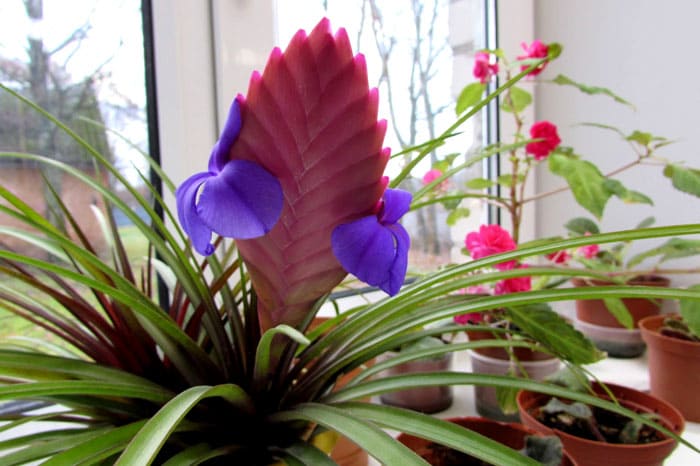
Tillandsia blue with its bright spikelet, on which purple-lilac flowers bloom in autumn, is spectacular
Tillandsia grows very slowly, but if you maintain high humidity around, then the apartment will soon be decorated with an unusual plant.
The flower belongs to succulents, its branches are leafless, and the milky sap is poisonous - such a pet can become dangerous in a house with small children.
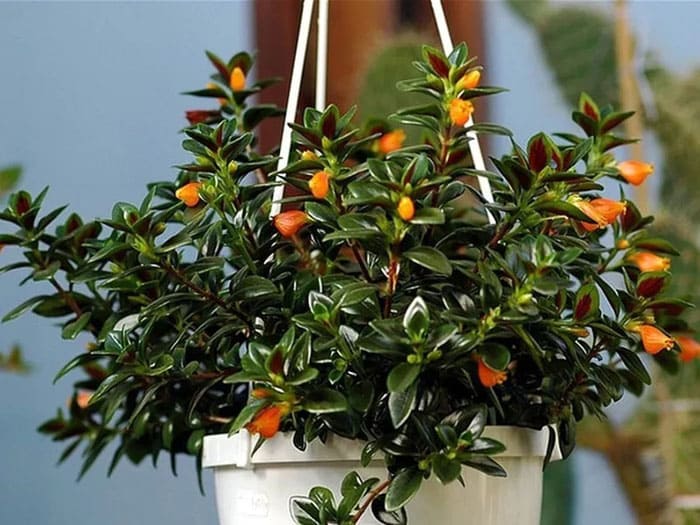
The representative of the Gesneriev family was named nude hypocyrt. Although it is even strange to call a flowering plant with an abundance of foliage naked of rare beauty
Learning to zone space using plants
In modern studios or very spacious rooms, there is often a need for competent space zoning. It is worth trying to involve green spaces in this useful business - and the air will become more pleasant, and the eye will rejoice.
There are several ways to place indoor plants for zoning purposes:
Plants should be selected taking into account their wishes for the level of illumination, for external compatibility, and it will also be necessary to study the dormant and flowering periods of candidates for a flower rack or wall.

A wall composition can consist of one type of plants, preferably ampelous varieties - such a wall looks just class!
The main condition is to monitor the health of each green pet, because if pests start on one of them, then a fatal epidemic of the entire composition will break out very quickly.
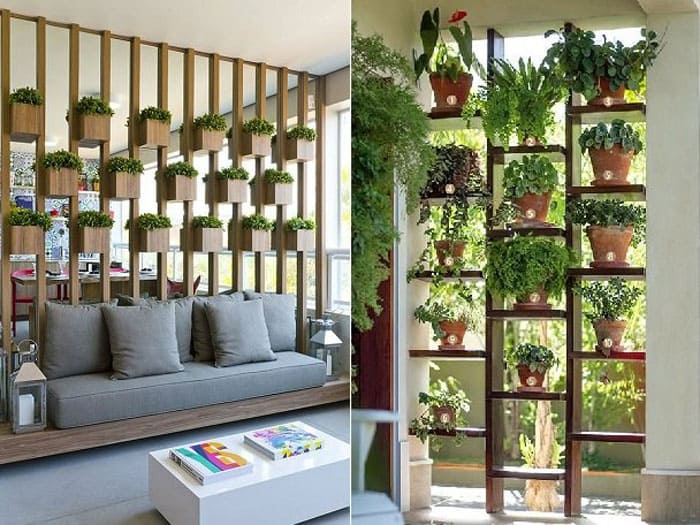
Shelves look light, do not interfere with the visualization of the space and regularly perform their function of dividing the room into zones

It is not necessary to divide the room, it is enough just to accentuate the important area with ampel vines
Where and how plants are placed in different parts of the rooms
The placement of pots, tubs and pots cannot be spontaneous: besides the fact that it is easy to make mistakes with the wishes of the plants, it is also easy to spoil the impression of the interior if you put the flower in the wrong place.We figure out where and what flowers should be placed.
Wall decorations
Flowers can fall on the walls as residents of shelves or special wall pots. The place is searched among books, statuettes, between paintings.

A couple of flowers on the walls will not draw all the attention to yourself, but it will favorably place accents. One bush can be small and represented by an exotic species like an unassuming succulent, and the second can gracefully hang down to the floor
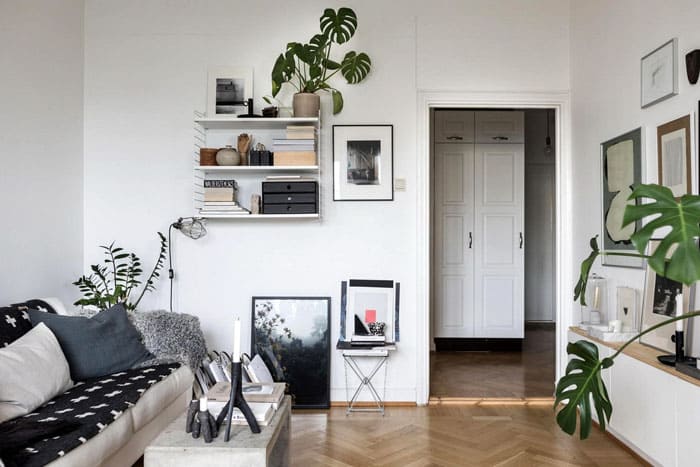
Young plants like monstera, ficus, aspidistra and asparagus thrive on the shelves. If the size of the green decoration becomes large, then it simply moves into the tub on the floor.

The room is originally decorated with tiered ladders. Each step has a small exclusive flower. Of course, with this placement, they should not shade each other too much.
Floor arrangement
Only the largest and tallest green giants are honored to stand on the floor. This includes an adult monster, coffee, lemon, palm trees, ficuses. The plant tub is usually rather big, so its appearance should not spoil the space and interfere with the passage of the room.

Large trees are located closer to vertical surfaces. If there is a large tree in the room, then this will be enough for fans of minimalism.
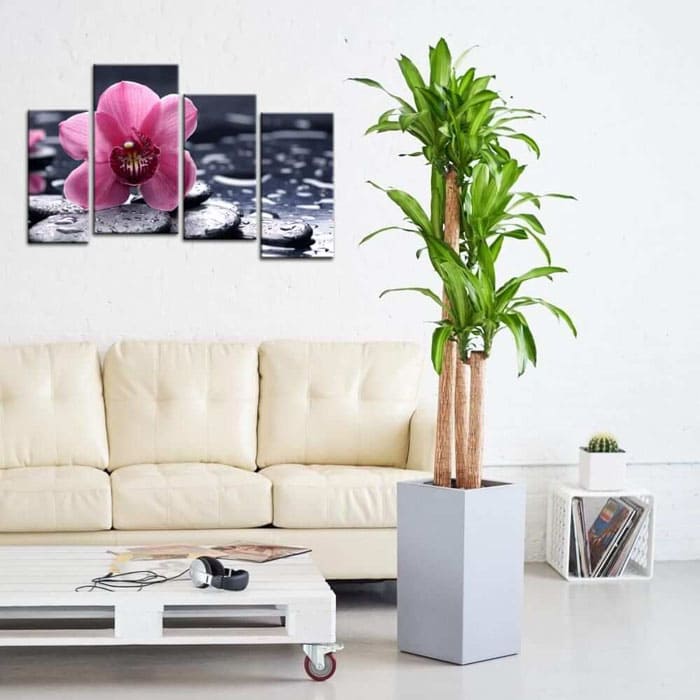
Bamboos are quite exotic and do not suit the classic design as well as for minimalism, hi-tech, art deco
Green and blooming paradise on the windowsill
The most common place for flowers is the windowsill. But if the windows face the south side, the seedlings will not last long under the scorching sun. Therefore, residents are located on the windowsill on the north and east windows, less often on the west ones. The north window is suitable for some succulents, shade-tolerant species and plants that are in a dormant period - the flowers there lack light. East and west are more or less neutral and allow you to test the window sill as a flower living room.
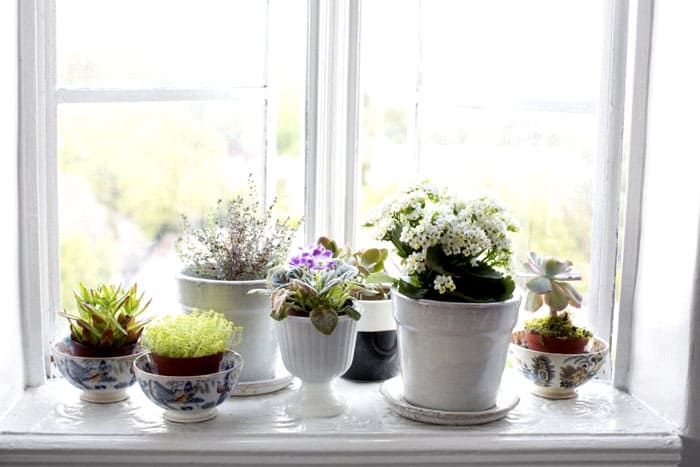
If you want to set the window sill with flowers, they are guided by the size of the window and the window sill itself: it is better to pay attention to small flowers that will not grow very much and will not interfere with each other with their neighborhood
On stands
Floor stands change the impression: one and the same plant is perceived in completely different ways, just standing on the floor and lying royally in a beautiful stand.
The stand can be forged, plastic, chrome, wood, as well as low, high, for one pot or several. The style of the stand is also different.
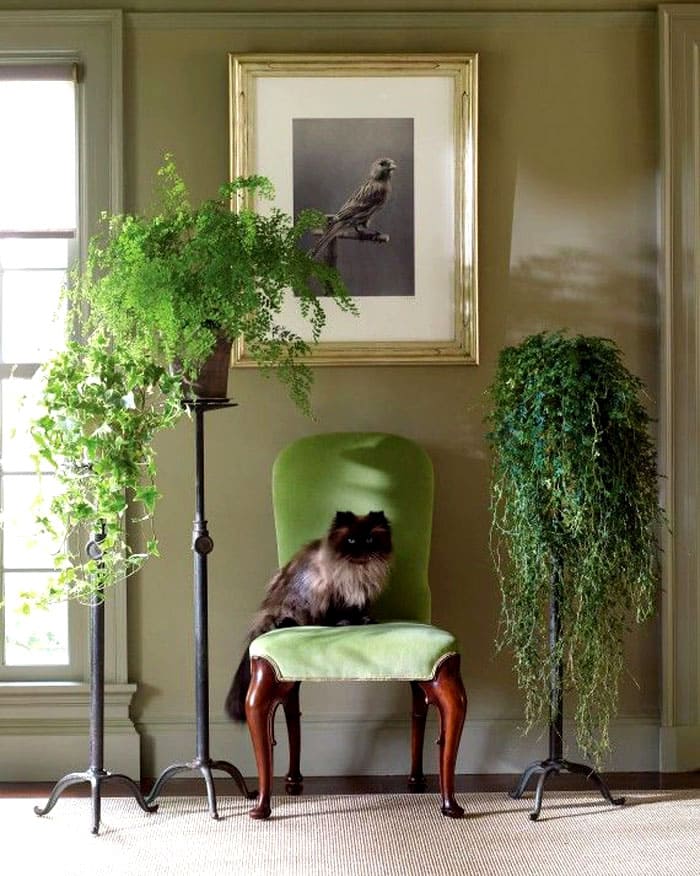
Single-legged stands must be very stable so that they do not wobble and fall if accidentally touched lightly. Such products are placed away from the aisles.
Indoor plants and interior: which is better for different rooms at home
Placing poisonous plants in the nursery is pure madness, and setting the living room with flowers so that it is impossible to pass is also not an option. Let's try to find the best option for decorating different rooms with living plants.
Living room and study
For the living room, we leave large-sized trees in tubs: hibiscus, dollar tree, all kinds of palm trees, vriezias, ficuses. It is worth trying to arrange anthurium or spathiphyllum on the coffee table.
Living green walls, compositions from groups of different plants are suitable for living rooms.However, a living wall will be appropriate in the office.
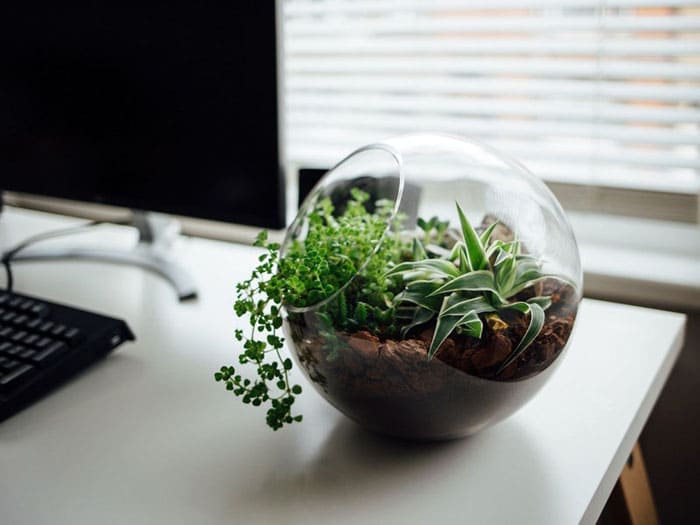
A desk in the workplace will only benefit if you place an unusual terrarium with different types of small plants on it
The offices should not be piled up with greenery; it is better to place one or two large plants here than many small ones.
Bedroom and children's room
The bedroom allows our body to rest, and if there is an additional source of oxygen, the rest turns out to be truly fabulous. Best friends in the bedroom are Chlorophytum, Kalanchoe and Aloe.

Flowers in the bedroom are arranged with care: some strongly smelling plants, although they look beautiful, can bring a constant headache
The nursery cannot be crammed with many pots and stands: why place many flowers there if the pots will end up on the floor anyway? Even the tidiest kid is able to accidentally push his beloved green friend. If you really want to populate the nursery with greenery, then it is better to arrange the pots on the windowsill - so the child will have less temptation to get there himself.
Loggia and balcony
If the loggia or balcony is glazed, then they are guided by the same principles with the cardinal points as for windows. With open options, it is a little more difficult, since the flowers will not be shaded by almost anything.
The pots are placed on the walls where there is diffused sunlight or directly on the windowsill, if the side of the world allows.
Where if not on the balcony to place a flower greenhouse? You just need to remember that the abundance of greenery on the balcony or log will significantly reduce the amount of light entering the room through this wonderful kingdom of living nature.
Creating their own creative projects for future interior and design, they are guided by someone else's experience, their own views on decor and do not forget about the needs of the plants themselves.
Video: flowers in the interior




